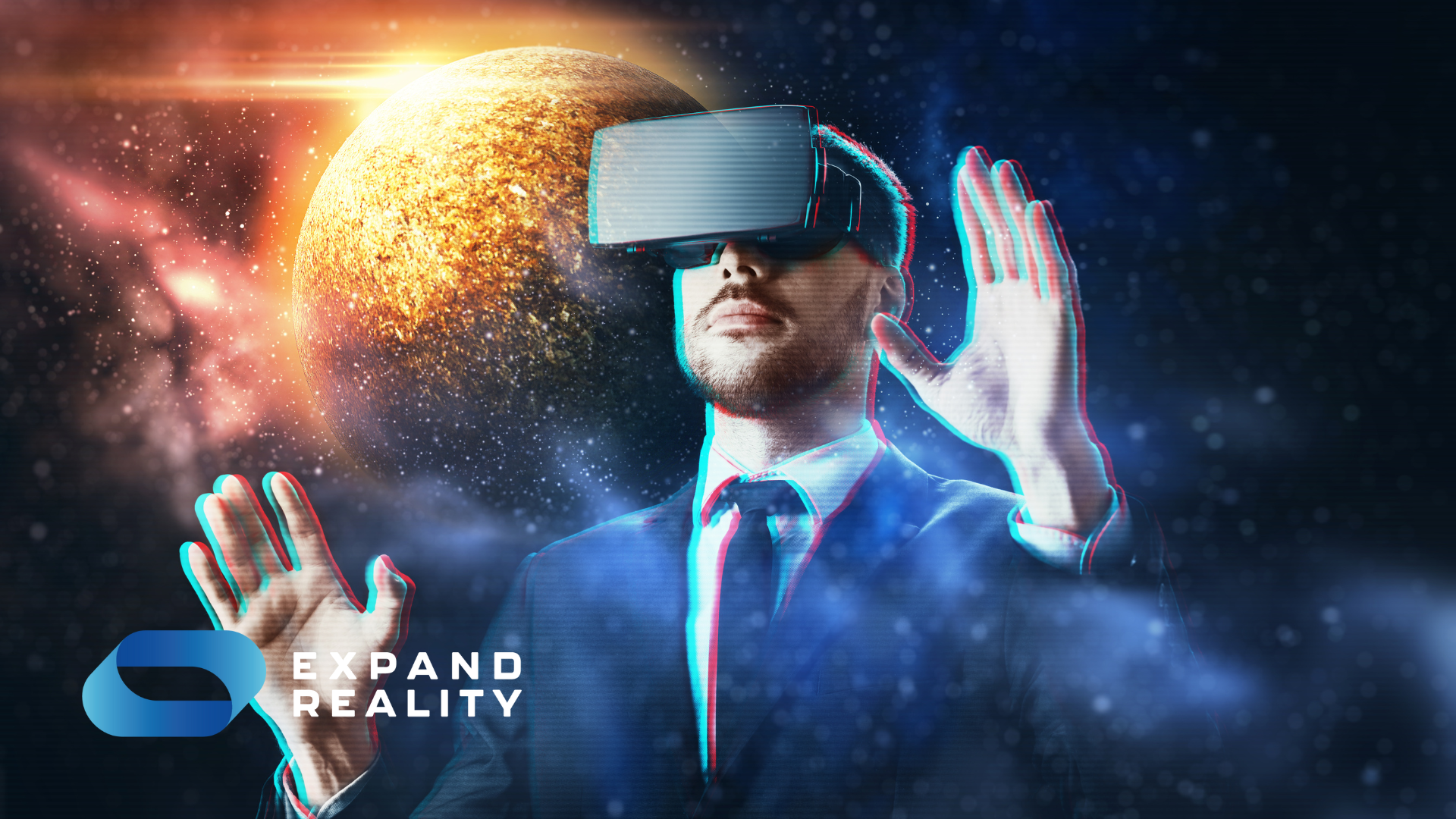hello@simplyvideo.io
A brief history of extended reality technology
Extended reality (XR) technology might seem shiny and new, but it actually has a long and interesting history. Discover its surprising origins in our brief history of XR.

Are you familiar with augmented reality (AR)? We're talking tech like the Microsoft HoloLens 2 and Magic Leap 1 – ingenious devices that overlay virtual elements onto real-world environments.
Good. Now guess when the first augmented reality device was developed.
What do you reckon? 2016? 2011? Perhaps 2007, at a push?
More like 1992.
Yes, in 1992 Louis Rosenberg built the first immersive augmented reality system – known as Virtual Fixtures.
Granted, this device looked very different to the sleek AR headsets we know today. It took the form of a human-controlled exoskeleton, which helped the wearer control remote machinery more precisely.
Still, the underlying concept has remained the same – using virtual elements to enhance and
extend
our perception of lived reality.
And while augmented reality – and other extended reality (XR) technologies – might
feel
shiny and new, the truth is this: people have been chasing this concept for a long, long time.
The 1800s: a world in stereo
If you define XR as technology that alters our perception of reality, then you can trace the technology back very far indeed.
Right back, in fact, to the optical novelties of the 1800s.
Take the Stereoscope, for instance. Designed by scientist Sir Charles Wheatstone and built by optician R. Murray, this device presented slightly different images to each eye. This would, in effect, "trick" the brain into seeing a 3D image.
The 1960s: the first flickers of VR
Let's take a big leap forward to the 1960s, and discover the progenitors of today's virtual reality technology.
In the consumer space, there was the Sensorama. Designed by cinematographer Morton Heilig, this sit-down device promised (and by some accounts,
delivered) an immersive, multi-sensory entertainment experience. Users could view films in stereoscopic 3D, experience body tilting effects and even smell odours that were released in sync with the visuals.
While the Sensorama was awe-inspiring, it was effectively a novelty – like Wheatstone's Stereoscope, it was designed for impressiveness rather than usefulness. And it lacked one key element of true virtual reality: interactivity.
For that missing piece of the puzzle, we have to turn to a computer scientist called Ivan Sutherland and his invention The Sword of Damocles. This formidable-looking device allowed the user to look around simple wireframe rooms and formed the basis of several experiments in the late 1960s.
While extremely bulky by modern standards, the Sword of Damocles is often called the first virtual reality headset. Thanks to its translucent screens, it's also sometimes cited as a forerunner to augmented reality devices.
The 1980s: VR takes a leap (and gets its name)
While scientists had been toying with related concepts for several years, it wasn't until the 1980s that the technology came to be called "virtual reality".
For that, we have to thank a company called VLP Research – a pioneer in early virtual reality and the developer of several technologies including the EyePhone (yes), DataSuit and DataGlove. It was VLP's founder Jaron Lanier who reportedly first used the term "virtual reality".
VLP wasn't the only company to make strides in VR. Organisations like NASA, Forte Technology and Virtuality experimented with their own systems into the 1990s.
The trouble is, these devices were still largely seen as novelties. It would take another couple of decades – and some huge technological advances – before XR truly came into its own.
2000 to present: XR goes mainstream
After the first wave of VR buzz in the 1980s and 1990s, XR technology largely fell off the mainstream media's radar.
That was until 2013 when Google unveiled its Glass headset. Suddenly, the world was obsessed with this big new thing called smart glasses.
While Glass is largely remembered as a flop, the truth is that the technology lives on as
an impressive enterprise product. Many say that Google's mistake was to target consumers – instead, they argue, Google should have focused on business users from the start.
Indeed, as companies like RealWear and Vuzix launched their own post-Glass smart glasses, they would focus their efforts on enterprise almost entirely.
(We should note, too, that Google Glass wasn't the first pair of smart glasses. Far from it. Precursors include MicroOptical's TASK-9, MicroVision's Nomad and the Vuzix V920.)
Meanwhile, in California, an 18-year-old inventor called Palmer Luckey was putting together a rough prototype of a new VR headset. This device would become the Oculus Rift – and go on to revolutionise video games as the first virtual reality device that was truly consumer-viable.
And only a few short years later, we would see a similar revolution in the world of augmented reality, with the launch of the first Microsoft HoloLens.
Want proof of XR's potential? In a little under a decade, it's transformed from a disruptive and unfamiliar technology into a mature industry with a huge number of
enterprise use cases.
As we've seen, however, the foundations were laid much earlier…
We hope you've enjoyed learning about the history of XR. Be sure to bookmark our
extended reality blog for more industry news and analysis.

Contact Us
Connect global teams. Collaborate with remote experts. Streamline processes and unlock cost savings with industry-ready extended reality technology.
Contact Info
hello@expandreality.io
Gemini Business Park
Sheepscar Way
Leeds
LS7 3JB
All Rights Reserved | Expand Reality







